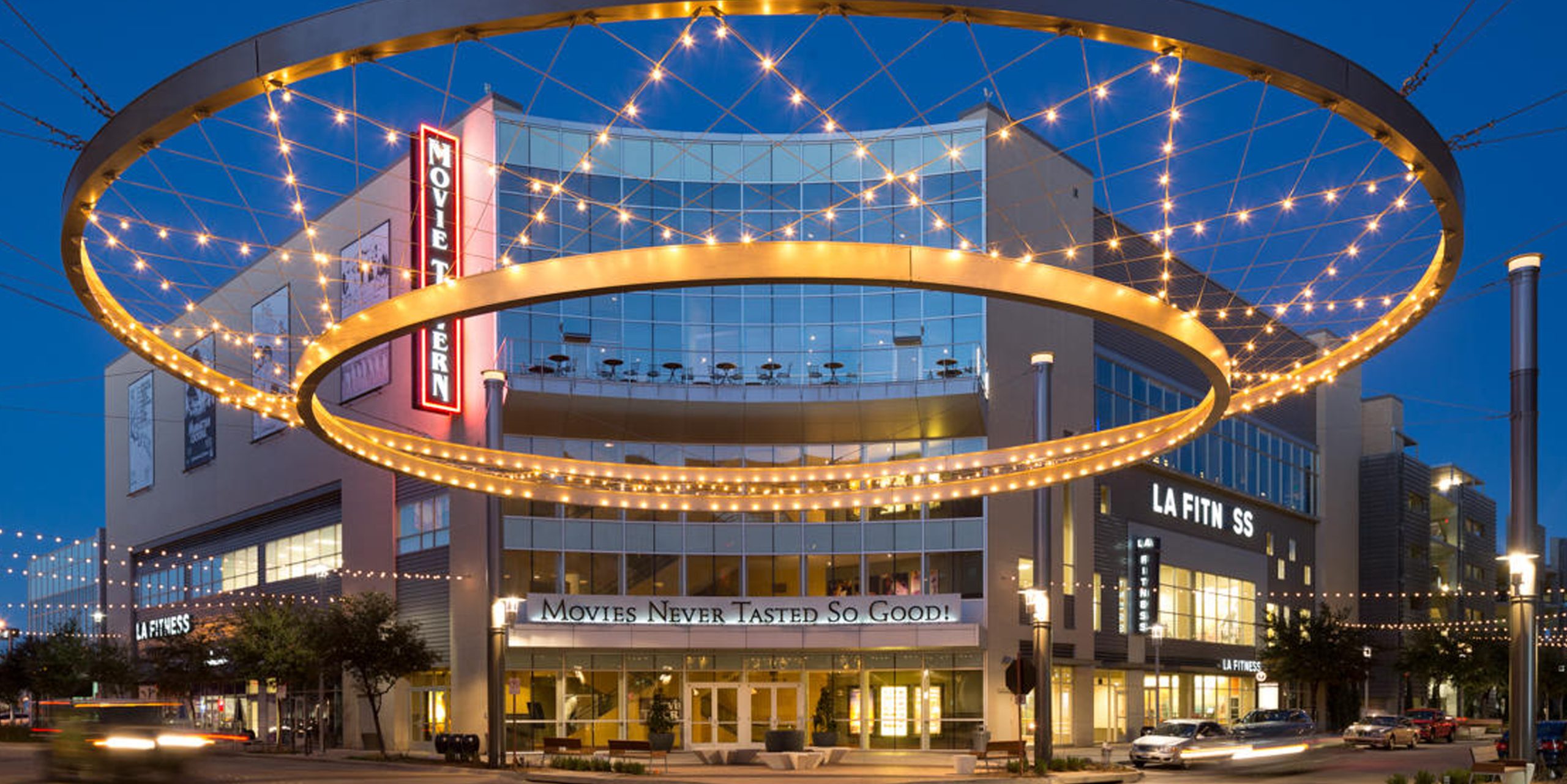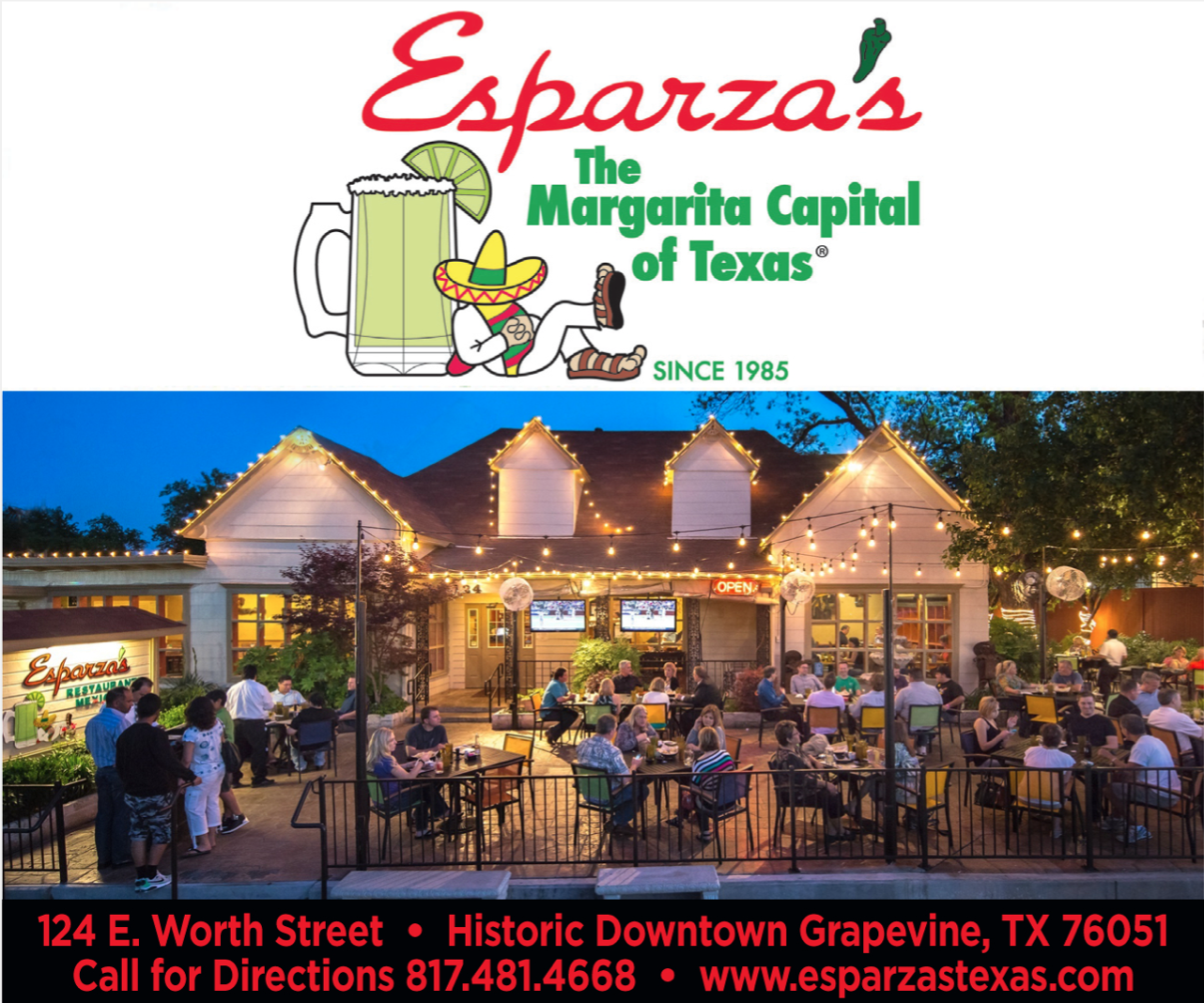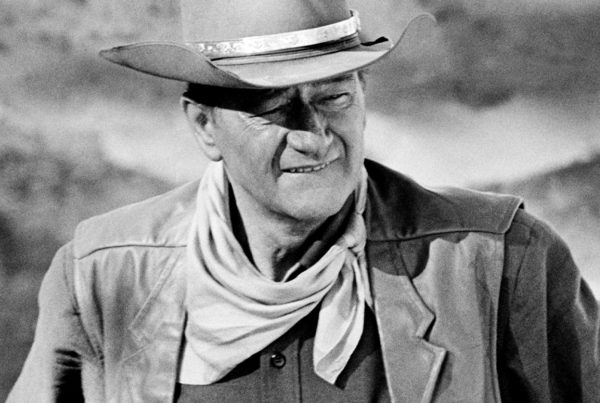By Michael H. Price
“Happy to follow the bumpy brick road,” reads a newspaper headline from 1981—a lasting assertion that Camp Bowie Boulevard’s historic brick pavement must endure, and never mind the occasional traffic-engineering idea of modernizing the pathway with concrete and asphalt.
Now, as then, seekers of entertainment, adventure, and dining experiences remain “happy to follow the bumpy brick road” as a principal gateway to Fort Worth’s west side and its many commercial and civic offshoots. The attractions range from a burgeoning West 7th Street district to a broadening cultural and historical district, connecting southward with University Park Village, westward with the Chapel Hill shopping-and-entertainment development, and branching out further with new moviegoing venues, boutique eateries, and varied opportunities for strolling and sightseeing amid architectural innovations on a comfortably human scale.
Pioneering publisher and civic booster Amon Carter characterized Fort Worth as “where the West begins.” And for locals and visitors alike, the west side marks the beginning of that beginning: The West hardly could have picked a keener starting point than Fort Worth.
Prominent among the newer landmarks is Dickies Arena, a versatile 14,000-seat showplace named after the Fort Worth-based manufacturer of workplace clothing. Located at 1911 Montgomery Street within the Will Rogers Memorial Center, Dickies Arena complements and expands the scope of the adjacent Will Rogers Complex, providing a new home for the Fort Worth Stock Show Rodeo. And Fort Worth, in turn, hardly could have picked a site more apt for its burgeoning west side Cultural District.
Rippling with heavy-duty commercial, artistic, and residential growth since the dawn of the 21st century, the west side overall has seen its very skyline change with the transformation of a busy West 7th Street into a streamlined conduit connecting the downtown area’s Sundance Square development with the Cultural District. Heading west (naturally) from downtown Fort Worth, one finds the Cultural District radiating from the intersection where 7th Street crosses University Drive and, in the process, morphs into the historic, brick-paved Camp Bowie Boulevard.
Visitors in search of western-style discoveries—from plain-and-fancy dining to fine art and varied entertainment—will find such delights in volume on the west side. Cultural attractions, restaurants, mainstream and special-interest shopping, and lavish natural gardens flourish as a reminder of how Fort Worth has built upon its frontier origins.
Several of the world’s finest museums, playhouses, and galleries anchor a vast Cultural District. The hand-laid red-brick pavement of Camp Bowie Boulevard is an attraction in itself, lined with an ever-expanding array of art galleries, stage-and-screen auditoriums, boutiques, scholarly museums, restaurants and lounges, and shopping malls. One long-standing favorite, Domain XCIV, 3100 W. 7th Street, originated in 1994 along Camp Bowie Boulevard. Persistent growth has led to a 6,500-square-foot showcase, combining fine furniture and vintage European treasures and accessories. Collections include Theodore Alexander, Wesley Hall, and Guild Master. Domain XCIV has long supplied anchorage for the village-within-a-city developments of the West 7th Street area.
Unique movie viewing options abound in Fort Worth. Treat yourself to dinner and take in Hollywood’s latest at Movie Tavern West 7th or enjoy a retro movie experience at Coyote Drive-In Theater & Canteen on Panther Island. For the more arthouse-oriented, the Modern Art Museum’s Magnolia at the Modern film screening series has offered a thoughtful curation since the early 2000s. A more recent billing of theirs is Movies That Matter, a free, bi-monthly film series program that celebrates diversity and inclusion, courtesy of the City of Fort Worth’s Human Relations Commission.
Farther along to the west of the west, the newly dedicated Como Community Center’s $12 million complex at 4660 Horne Street has installed a gymnasium, a library, after-school activity centers, and all-ages activity programs. Luncheon attractions, sparked by the addition of Alabama-based Chicken Salad Chick in Ridglea Village, have grown to include such established draws as Blue Bonnet Bakery, Feastivities, Secret Garden Restaurant, and The Lunch Box. Wild Acre Brewing Co. has opened a Camp Bowie location to complement its downtown home base. A longtime popular favorite, Ol’ South Pancake House at 1509 S. University Drive, anchors the lower reaches of the west-by-south side and lends a sense of history to the immediate area’s dining opportunities.
University Park Village, too, is rich in variety—a high-end shopping district offering popular brands such as Ann Taylor, Williams Sonoma, Pottery Barn, Anthropologie, and lululemon, among casual and fine-dining experiences alike, and the high-tech wonderland of the Apple Store.
The Fort Worth Museum of Science and History commands the westward view of the district from Montgomery Street, and just northward are additional cultural touchstones: Designed by renowned architect Philip Johnson, the Amon Carter Museum of American Art houses a definitive collection of American paintings, photography, and sculpture. The collection spans early 19th-century art to modern works of today and is home to nearly 400 works by Frederic Remington and Charles M. Russell. Nearby is the Kimbell Art Museum, still living up to Newsweek’s description as “arguably the most beautiful museum in America,” including its Renzo Piano Pavilion addition. The neighboring Modern Art Museum of Fort Worth is the oldest such museum in Texas—housed in a work-of-art 2002 building designed by world-renowned Japanese architect Tadao Ando—and featuring bold gallery exhibitions, concert attractions, and every weekend, leading-edge independent-studio films.
The Museum of Science and History, anchoring a campus within the Cultural District, has been designed by similarly renowned architects Ricardo and Victor Legorreta. Inside, one finds vast galleries of Texas-bred dinosaur specimens and the state’s oil-and-gas heritage, in addition to the Cattle Raisers Museum, the Fort Worth Children’s Museum, Stars Café, and the digital Noble Planetarium. The Omni Theater, an IMAX® superscreen dome, links with the Museum of Science and History and will reopen in December 2023 after renovations. Next door is the National Cowgirl Museum and Hall of Fame, honoring women of the American West who lived and worked on ranches, led expeditions, sat before an easel, aimed a rifle and hit the bull’s eye, or sat on the Supreme Court.
When the museum meanderings trigger an appetite for fine dining, two long-established, museum-based cafés stand ready to serve. The Kimbell Buffet Restaurant offers indoor or patio lunch and a light evening menu within one of the most beautiful modern buildings in America. The Modern Art Museum’s 250-seat Café Modern, with an outdoor terrace, overlooks a serene reflecting pond. The Modern’s full-service kitchen delivers superb cuisine for lunch, Sunday brunch, and scheduled seasonal dinners.
Neighboring the museum community is the city’s landmark Will Rogers Memorial Center, a versatile 85-acre entertainment complex with 45 acres housing the Will Rogers Coliseum & Auditorium. Its majestic Pioneer Tower dates from the Texas Centennial Celebration of 1936. Still a dominant feature within the district, the coliseum holds pride of place as the first domed structure of its kind in the world. The complex also boasts an equestrian center and exhibit halls, home to the annual Fort Worth Stock Show.
Southward off University Drive, visitors can experience the glories of nature at Trinity Park, a pristine oasis bordered by a fork of the placid Trinity River. Here, picnickers, joggers, and strollers can explore wandering pathways or travel on a miniature railroad. Opposite the park, across University Drive, Fort Worth’s Botanic Garden beckons. Founded in 1934, it’s a lush 109-acre tapestry of dappled shade accented by vibrant splashes of color. The Garden is home to thousands of species of native and exotic plants in 21 specialty gardens and is the oldest major botanic garden in the state of Texas. The European-designed Rose Garden features more than 3,400 roses, and the 10,000-square-foot Conservatory houses tropical flowers and foliage from around the world. Adjacent to the Botanic Garden is the Botanical Research Institute of Texas (BRIT), whose mission is to “reduce its footprint on the natural world as well as protect and restore ecosystem services.” BRIT’s building was designed as an example of how much of this can be accomplished.
A short distance southward lies the illustrious Fort Worth Zoo, nationally ranked among the finest. The zoo is home to thousands of animals, both native and exotic. Viewing facilities and natural habitat exhibits are set up for optimal views of the animals, often separated from their observers by only a river, a waterfall, or a large window.
Across from the Zoo, Log Cabin Village offers another view of the city’s rich frontier history, boasting seven authentic log homes dating from the mid-to-late 1800s. Period-dressed interpreters greet visitors inside each cabin, offering a living history of the home and its origin.
The mood to explore might be triggered by art, dining, shopping, or the wonders of nature. Fort Worth’s west side meets all these interests and then some!





